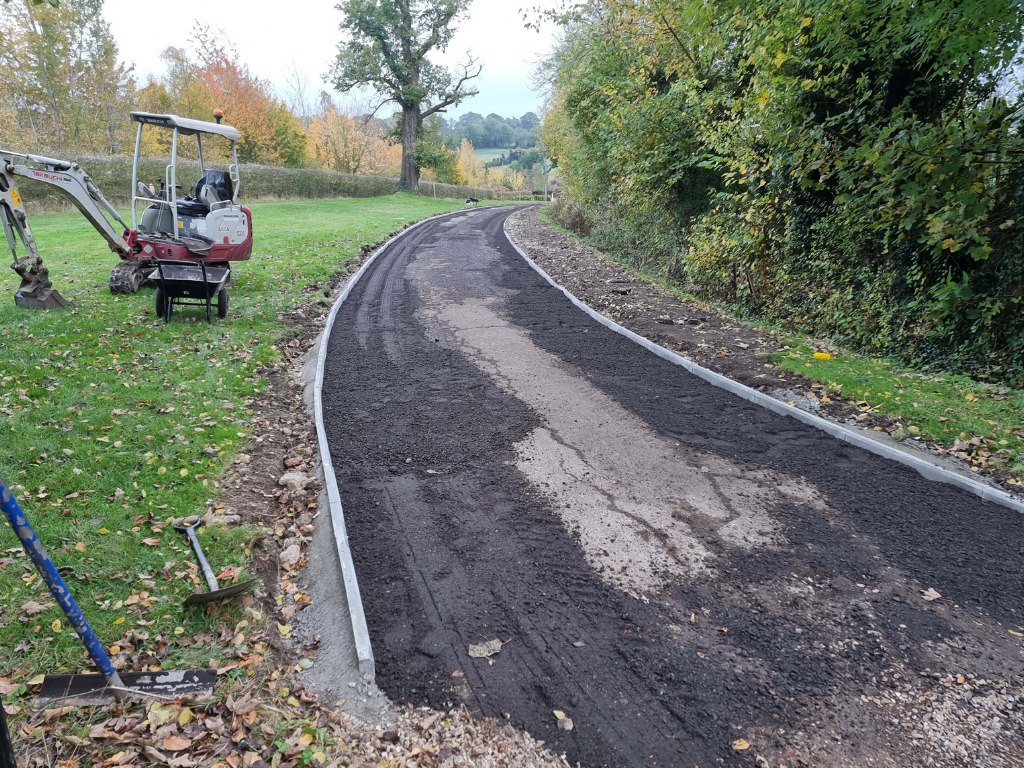The Impact of Weather on New Build Tarmac Surfaces
Introduction: Tarmac, known as asphalt, is a popular choice for driveways due to its durability, smooth surface, and cost-effectiveness. When you invest in a new tarmac driveway, it’s essential to understand how weather conditions can affect its longevity and appearance. In this blog post, Sevenoaks Driveways will explore the impact of weather on newly built tarmac surfaces and provide tips on protecting and maintaining your driveway in different weather conditions.
1. Rain and Moisture:
Rainwater is the primary adversary of tarmac surfaces. Over time, constant exposure to moisture can lead to the erosion of the tarmac’s top layer. To mitigate this, ensure your driveway has proper drainage to redirect rainwater from the surface. Inspect and maintain drainage systems like ditches and drains to prevent water pooling.
2. UV Rays and Heat:
Direct sunlight and high temperatures can cause tarmac to soften and lose its resilience. This can lead to surface deformation, such as ruts and depressions. Consider applying a sealant or UV-resistant coating to protect your driveway from UV damage. These products can prolong the life of your tarmac surface and maintain its appearance.
3. Freezing Temperatures:
Cold weather can be detrimental to tarmac driveways. When water freezes within cracks or pores in the tarmac, it can expand and cause structural damage. Regularly inspect your driveway for cracks and promptly fill them with suitable sealants. Additionally, consider using de-icing agents sparingly during winter to prevent ice formation.
4. Snow and Ice:
Snow and ice can create slippery conditions on tarmac driveways, posing safety hazards. Use snow ploughs or shovels with plastic blades to remove snow and ice without damaging the tarmac surface. Avoid using metal-edged shovels or excessive force to prevent scratching or gouging the tarmac.
5. Regular Maintenance:
Proactive maintenance is the key to extending the life of your tarmac driveway in various weather conditions. Regularly sweep away leaves, debris, and dirt to prevent staining and surface abrasion. Perform routine inspections and address any issues promptly, such as cracks, potholes, or surface deterioration.
6. Professional Resurfacing:
Consider professional resurfacing if your tarmac driveway shows signs of extensive wear and damage due to weather or other factors. This process involves adding a new layer of tarmac over the existing surface, restoring its appearance and functionality.
7. Proper Drainage:
Ensuring that your driveway has adequate drainage is crucial to preventing water-related damage. Consider installing a French drain, trench drain, or other drainage solutions to redirect water away from the tarmac surface.
Conclusion: Weather conditions can significantly impact the durability and appearance of newly built tarmac surfaces. By taking proactive measures and investing in proper maintenance, you can protect your driveway from the adverse effects of rain, UV rays, freezing temperatures, and other weather-related challenges.
Call us on: 01732 442 199
Click here to find out more about Sevenoaks Driveways
Click here to complete our contact form and see how we can help with your driveway needs.

